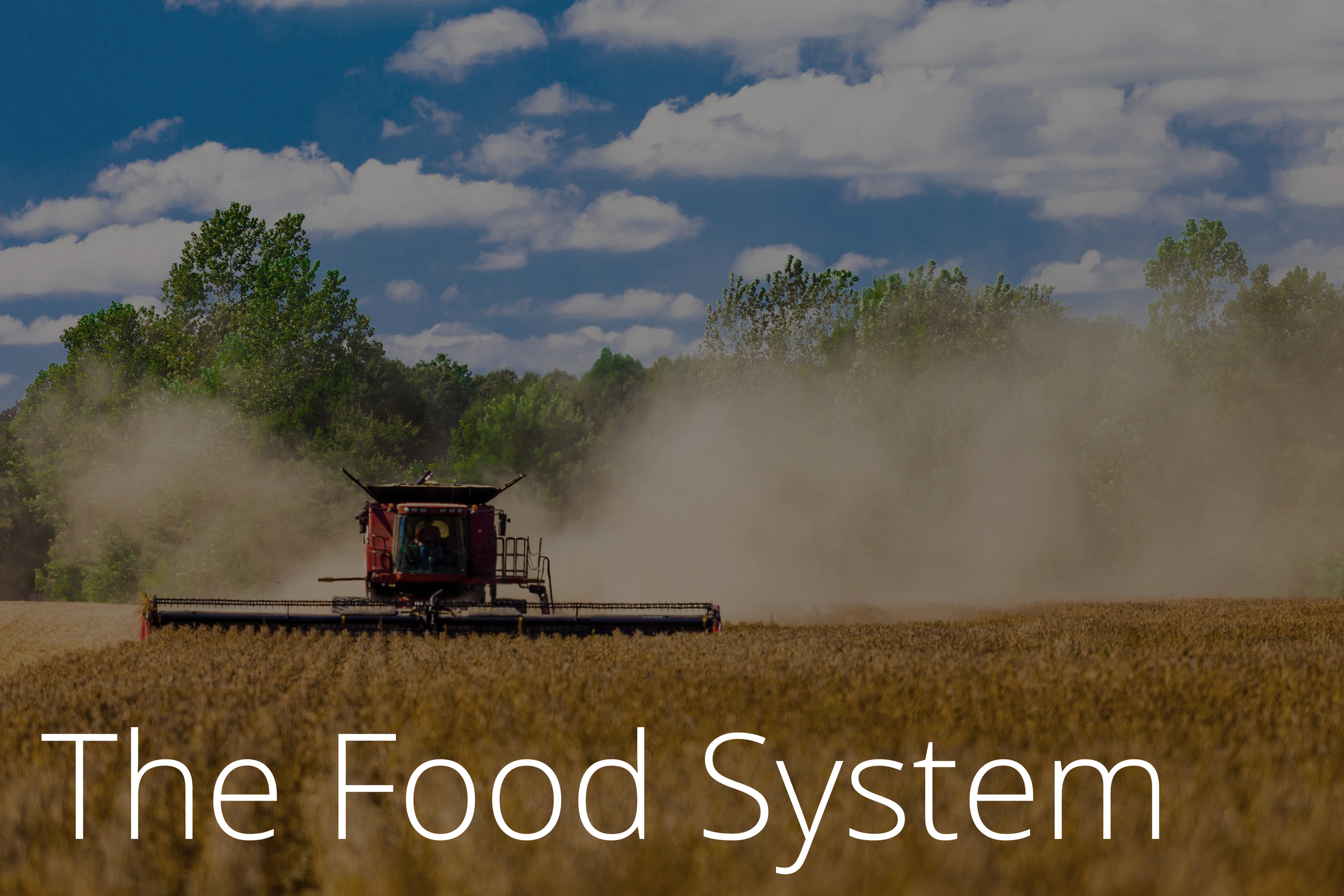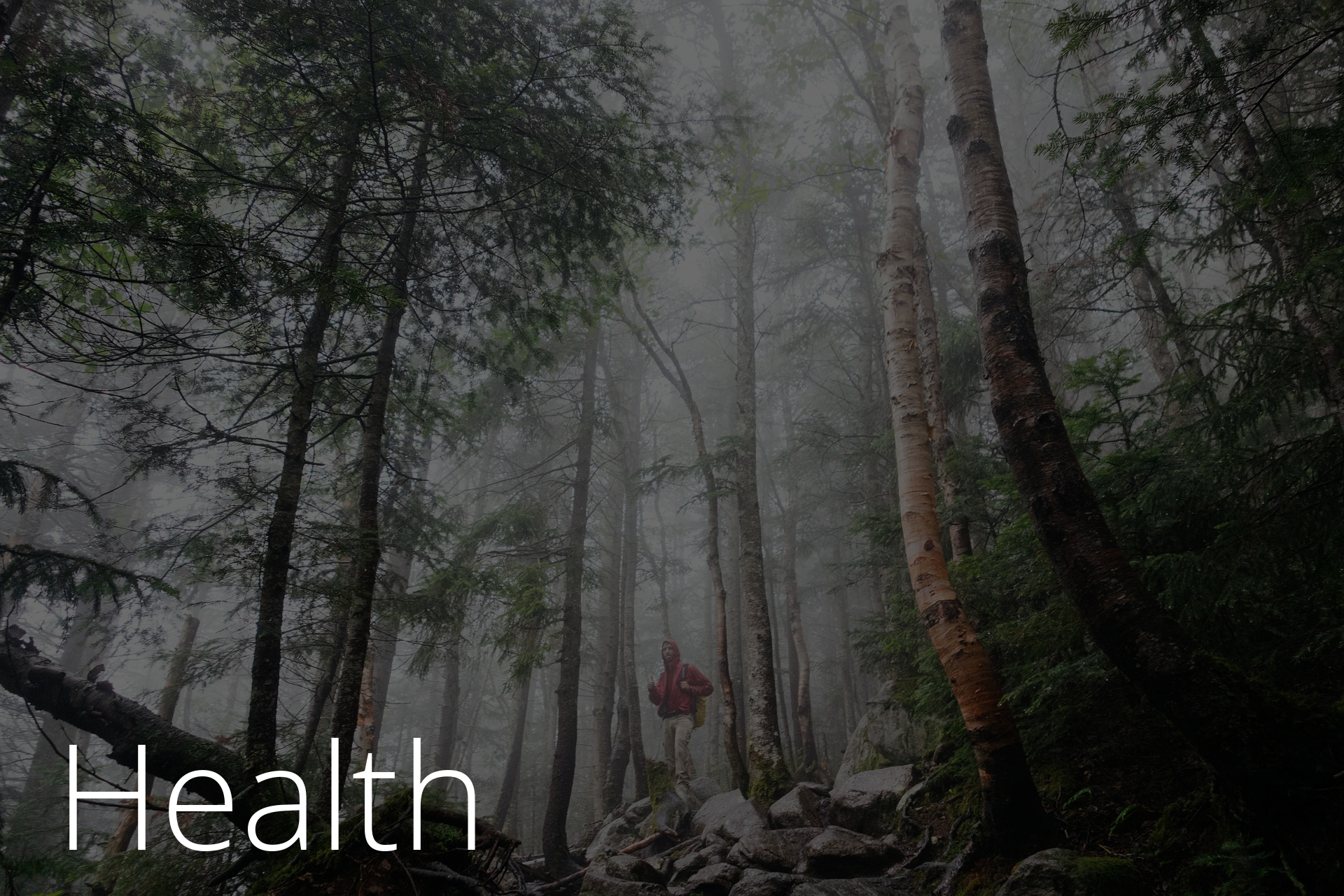Of all reasons to reduce meat consumption, the welfare of animals is the most likely to attract judgment and divisiveness from all parties to the discussion. While whether or not we are “morally obligated" to care about the wellbeing of animals may be debated elsewhere, there are clear arguments to be made that reducing meat consumption would benefit the wellbeing of animals – animals that, to the best of our scientific knowledge, do experience some sort of feelings, and have the capacity to suffer. By reducing the demand for meat, it's possible to improve the welfare of specific animals, and to reduce the number of suffering animals. The following is a short, incomplete summary of the most notable negative impacts of the animal product industry on the welfare of a few specific species.
1. The living conditions of egg-laying hens:
In order to meet growing demand, most industrially produced eggs now come from hens kept in “battery cages” – rows of small cages piled on top of one another. The effects of these living conditions on the hens’ welfare are major, with small quarters greatly reducing their mobility and ability to complete normal biological functions, such as standing, turning, stretching, preening, foraging, and dust bathing.[1][2][3][4] These conditions often result in physical damage to the body, with one study finding 29% of live battery hens to have at least one broken bone.[5] In such confined quarters, hens typically become aggressive, pecking at one another in competition for space. In response to this, “debeaking,” in which the tip of the beak is cut off, has become common practice. Multiple studies have concluded that debeaking is painful for hens both in the immediate and long-term, noting the sensitivity and concentration of nerve endings in the beak.[6][7][8] Finally, in order to increase egg production, hens regularly undergo “forced molting,” a process wherein hens are purposively placed under stressful conditions, including food deprivation and changes in lighting and sleep cycles, in order to induce changes in their biological processes.[9][10]
2. The living conditions of chickens raised for meat:
In an effort to increase efficiency of meat production, broiler chickens – those raised for their meat – have been selectively bred over generations for faster growth and greater muscle to bone ratio. In both broiler chickens and turkeys, this rapid growth combined with crowded conditions results in high rates of leg injury, broken bones, immobility, and death.[11][12][13][14][15]
3. The living conditions of dairy cows:
Selective breeding of dairy cows, as with broiler chickens, has resulted in significant health problems for the typical dairy cow. With ever-increasing udder size, rates of mastitis, a painful infection of the udder, have grown.[16][17] One study found that nearly 50% of all US dairy cows are infected at any given time.[18] Additionally, likely due to greater amounts of time spent standing, without moving, on hard, artificial surfaces, modern dairy cows have a high prevalence of hoof problems, such as sole hemorrhages, resulting in high rates of lameness.[19][20][21][22][23] Finally, in order to maintain milk production, dairy cows must give birth. Soon thereafter, the cow and the newborn calf are separated, an experience that many studies have found to be stressful for the mother and calf alike.[24][25][26]
4. The living conditions of domestic pigs:
Pigs, particularly sows during their gestation (pregnancy), farrowing (birth), and lactating phases, are comparably impacted by their housing. Small “gestation crates,” which offer sows little mobility, are seen to cause higher rates of skin lesions.[27][28][29][30][31] This lack of mobility further limits their ability to interact with newborn gilts. Sows will often respond to such conditions by biting the tails of those in nearby crates, behavior atypical of sows in other conditions.[32][33] In an effort to prevent such behavior, many farms respond by "docking," or cutting off a portion of, the animals’ tails, an experience found by multiple studies to be painful and stress-inducing.[34][35][36] Similarly, castration of juvenile pigs – as well as that of cattle – has been found to cause severe pain to the animal.[37][38][39][40]
5. General slaughter conditions:
The exact conditions of slaughter vary greatly between animals. Generally, however, even when efforts are made to ensure that the moment of slaughter is painless, the overall process can be both stressful and painful for the animals.[41][42][43][44] Livestock are typically removed from their farm or feedlot and herded, or, in the case of poultry, often grabbed and thrown, into a vehicle. Once in the vehicle, animals are transported, typically for many hours in crowded and partially climatically exposed conditions. At the point of slaughter, attempts are made to stun the animal prior to slaughter, though the first attempted stunning is occasionally ineffective and must be repeated. Even when effective, however, the act of stunning – using electricity or gas for poultry and captive bolt pistols for cattle – itself has been shown to produce some level of pain and stress.[45][46][47] By decreasing one’s own consumption of animal products, even slightly, one lowers the overall demand for these products, thus helping to reduce the number of animals who experience these painful living and slaughter conditions.
[1] Baxter, M. (1994). The welfare problems of laying hens in battery cages. Veterinary Record, 134(24), 614–619. doi:10.1136/vr.134.24.614
[2] Dawkins, M. S., & Hardie, S. (1989). Space needs of laying hens. British Poultry Science, 30(2), 413–416. doi:10.1080/00071668908417163
[3] Duncan, I. J. H. (2001). Animal Welfare Issues in the Poultry Industry: Is There a Lesson to Be Learned? Journal of Applied Animal Welfare Science, 4(3), 207–221. doi:10.1207/S15327604JAWS0403_04
[4] Lay, D. C., Fulton, R. M., Hester, P. Y., Karcher, D. M., Kjaer, J. B., Mench, J. A., … Porter, R. E. (2011). Hen welfare in different housing systems. Poultry Science, 90(1), 278–294. doi:10.3382/ps.2010-00962
[5] Gregory, N. G., & Wilkins, L. J. (1989). Broken bones in domestic fowl: Handling and processing damage in end‐of‐lay battery hens. British Poultry Science, 30(3), 555–562. doi:10.1080/00071668908417179
[6] D’silva, J. (2006). Adverse impact of industrial animal agriculture on the health and welfare of farmed animals. Integrative Zoology, 1(1), 53–58. doi:10.1111/j.1749-4877.2006.00013.x
[7] Duncan, I. J. H., Slee, G. S., Seawright, E., & Breward, J. (1989). Behavioural consequences of partial beak amputation (beak trimming) in poultry. British Poultry Science, 30(3), 479–488. doi:10.1080/00071668908417172
[8] Hughes, B. o., & Gentle, M. j. (1995). Beak trimming of poultry: its implications for welfare. World’s Poultry Science Journal, 51(01), 51–61. doi:10.1079/WPS19950005
[9] Aggrey, S. E., Kroetzl, H., & Foelsch, D. W. (1990). Behaviour of laying hens during induced moulting in three different production systems. Applied Animal Behaviour Science, 25(1–2), 97–105. doi:10.1016/0168-1591(90)90073-M
[10] McCowan, B., Schrader, J., DiLorenzo, A. M., Cardona, C., & Klingborg, D. (2006). Effects of Induced Molting on the Well-Being of Egg-Laying Hens. Journal of Applied Animal Welfare Science, 9(1), 9–23. doi:10.1207/s15327604jaws0901_2
[11] Bessei, W. (2006). Welfare of broilers: a review. World’s Poultry Science Journal, 62(03), 455–466. doi:10.1017/S0043933906001085
[12] D’silva, J. (2006). Adverse impact of industrial animal agriculture on the health and welfare of farmed animals. Integrative Zoology, 1(1), 53–58. doi:10.1111/j.1749-4877.2006.00013.x
[13] Goliomytis, M., Panopoulou, E., & Rogdakis, E. (2003). Growth curves for body weight and major component parts, feed consumption, and mortality of male broiler chickens raised to maturity. Poultry Science, 82(7), 1061–1068. doi:10.1093/ps/82.7.1061
[14] Knowles, T. G., Kestin, S. C., Haslam, S. M., Brown, S. N., Green, L. E., Butterworth, A., … Nicol, C. J. (2008). Leg Disorders in Broiler Chickens: Prevalence, Risk Factors and Prevention. PLoS ONE, 3(2), e1545. doi:10.1371/journal.pone.0001545
[15] Weeks, C. A., Danbury, T. D., Davies, H. C., Hunt, P., & Kestin, S. C. (2000). The behaviour of broiler chickens and its modification by lameness. Applied Animal Behaviour Science, 67(1–2), 111–125. doi:10.1016/S0168-1591(99)00102-1
[16] Bradley, A. J. (2002). Bovine Mastitis: An Evolving Disease. The Veterinary Journal, 164(2), 116–128. doi:10.1053/tvjl.2002.0724
[17] Seegers, H., Fourichon, C., & Beaudeau, F. (2003). Production effects related to mastitis and mastitis economics in dairy cattle herds. Veterinary Research, 34(5), 475–491. doi:10.1051/vetres:2003027
[18] Adcock, M., & Finelli, M. (1995). The Dairy Cow: America’s “Foster Mother.” HSUS News Winter, 23.
[19] Flower, F. C., & Weary, D. M. (2006). Effect of Hoof Pathologies on Subjective Assessments of Dairy Cow Gait. Journal of Dairy Science, 89(1), 139–146. doi:10.3168/jds.S0022-0302(06)72077-X
[20] Flower, F. C., & Weary, D. M. (2009). Gait assessment in dairy cattle. Animal, 3(01), 87–95. doi:10.1017/S1751731108003194
[21] Haskell, M. J., Rennie, L. J., Bowell, V. A., Bell, M. J., & Lawrence, A. B. (2006). Housing System, Milk Production, and Zero-Grazing Effects on Lameness and Leg Injury in Dairy Cows. Journal of Dairy Science, 89(11), 4259–4266. doi:10.3168/jds.S0022-0302(06)72472-9
[22] Hernandez-Mendo, O., von Keyserlingk, M. A. G., Veira, D. M., & Weary, D. M. (2007). Effects of Pasture on Lameness in Dairy Cows. Journal of Dairy Science, 90(3), 1209–1214. doi:10.3168/jds.S0022-0302(07)71608-9
[23] Rushen, J. (2001). Assessing the Welfare of Dairy Cattle. Journal of Applied Animal Welfare Science, 4(3), 223–234. doi:10.1207/S15327604JAWS0403_05
[24] Flower, F. C., & Weary, D. M. (2003). The effects of early separation on the dairy cow and calf. Animal Welfare, 12(3), 339–348.
[25] Rushen, J. (2001). Assessing the Welfare of Dairy Cattle. Journal of Applied Animal Welfare Science, 4(3), 223–234. doi:10.1207/S15327604JAWS0403_05
[26] Sandem, A.-I., & Braastad, B. O. (2005). Effects of cow–calf separation on visible eye white and behaviour in dairy cows—A brief report. Applied Animal Behaviour Science, 95(3–4), 233–239. doi:10.1016/j.applanim.2005.04.011
[27] Barnett, J. L., Hemsworth, P. H., Cronin, G. M., Jongman, E. C., & Hutson, G. D. (2001). A review of the welfare issues for sows and piglets in relation to housing. Australian Journal of Agricultural Research, 52(1), 1–28.
[28] Boyle, L. A., Leonard, F. C., Lynch, P. B., & Brophy, P. (2000). Influence of housing system during gestation on the behaviour and welfare of gilts in farrowing crates. Animal Science, 71(3), 561–570.
[29] Boyle, L. A., Leonard, F. C., Lynch, P. B., & Brophy, P. (2002). Effect of gestation housing on behaviour and skin lesions of sows in farrowing crates. Applied Animal Behaviour Science, 76(2), 119–134. doi:10.1016/S0168-1591(01)00211-8
[30] KilBride, A., Gillman, C., & Green, L. (2009). A cross-sectional study of the prevalence of lameness in finishing pigs, gilts and pregnant sows and associations with limb lesions and floor types on commercial farms in England. Animal Welfare, 18(3), 215–224.
[31] Scott, K., Chennells, D. J., Campbell, F. M., Hunt, B., Armstrong, D., Taylor, L., … Edwards, S. A. (2006). The welfare of finishing pigs in two contrasting housing systems: Fully-slatted versus straw-bedded accommodation. Livestock Science, 103(1–2), 104–115. doi:10.1016/j.livsci.2006.01.008
[32] Beattie, V. E., Breuer, K., O’Connell, N. E., Sneddon, I. A., Mercer, J. T., Rance, K. A., … Edwards, S. A. (2005). Factors identifying pigs predisposed to tail biting. Animal Science, 80(03), 307–312. doi:10.1079/ASC40040307
[33] Moinard, C., Mendl, M., Nicol, C. J., & Green, L. E. (2003). A case control study of on-farm risk factors for tail biting in pigs. Applied Animal Behaviour Science, 81(4), 333–355. doi:10.1016/S0168-1591(02)00276-9
[34] Sutherland, M. A., Bryer, P. J., Krebs, N., & McGlone, J. J. (2008). Tail docking in pigs: acute physiological and behavioural responses. Animal, 2(02), 292–297. doi:10.1017/S1751731107001450
[35] Sutherland, M. A., & Tucker, C. B. (2011). The long and short of it: A review of tail docking in farm animals. Applied Animal Behaviour Science, 135(3), 179–191. doi:10.1016/j.applanim.2011.10.015
[36] Torrey, S., Devillers, N., Lessard, M., Farmer, C., & Widowski, T. (2009). Effect of age on the behavioral and physiological responses of piglets to tail docking and ear notching. Journal of Animal Science, 87(5), 1778–1786.
[37] Capucille, D. J., Poore, M. H., & Rogers, G. M. (2002). Castration in cattle: techniques and animal welfare issues. Compendium, 24, 66–71.
[38] Duncan, I. J. H. (2005). Science-based assessment of animal welfare: farm animals. Revue Scientifique et Technique-Office International Des Epizooties, 24(2), 483.
[39] Stafford, K., & Mellor, D. (2005). The welfare significance of the castration of cattle: A review. New Zealand Veterinary Journal, 53(5), 271–278. doi:10.1080/00480169.2005.36560
[40] Taylor, A. A., & Weary, D. M. (2000). Vocal responses of piglets to castration: identifying procedural sources of pain. Applied Animal Behaviour Science, 70(1), 17–26. doi:10.1016/S0168-1591(00)00143-X
[41] Grandin, T. (1998). The feasibility of using vocalization scoring as an indicator of poor welfare during cattle slaughter. Applied Animal Behaviour Science, 56(2–4), 121–128. doi:10.1016/S0168-1591(97)00102-0
[42] Terlouw, E. M. C., Arnould, C., Auperin, B., Berri, C., Le Bihan-Duval, E., Deiss, V., … Mounier, L. (2008). Pre-slaughter conditions, animal stress and welfare: current status and possible future research. Animal, 2(10), 1501–1517. doi:10.1017/S1751731108002723
[43] Warriss, P. D. (1990). The handling of cattle pre-slaughter and its effects on carcass and meat quality. Applied Animal Behaviour Science, 28(1–2), 171–186. doi:10.1016/0168-1591(90)90052-F
[44] Warriss, P. D. (1998). The Welfare of Slaughter Pigs During Transport. Animal Welfare, 7(4), 365–381.
[45] Grandin, T. (2002). Return-to-sensibility problems after penetrating captive bolt stunning of cattle in commercial beef slaughter plants. Journal of the American Veterinary Medical Association, 221(9), 1258–1261. doi:10.2460/javma.2002.221.1258
[46] Grandin, T. (2010). Auditing animal welfare at slaughter plants. Meat Science, 86(1), 56–65. doi:10.1016/j.meatsci.2010.04.022
[47] Von Wenzlawowicz, M., von Holleben, K., & Eser, E. (2012). Identifying reasons for stun failures in slaughterhouses for cattle and pigs: a field study. Animal Welfare, 21(1), 51–60. doi:10.7120/096272812X13353700593527




